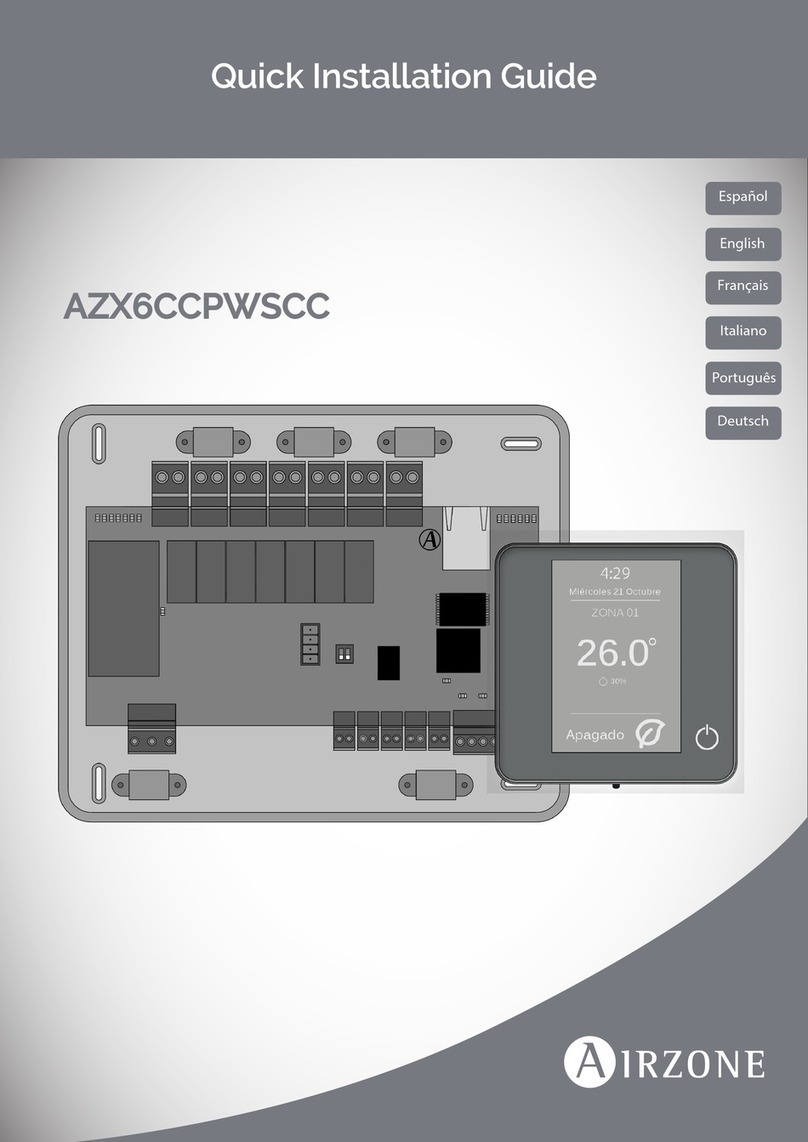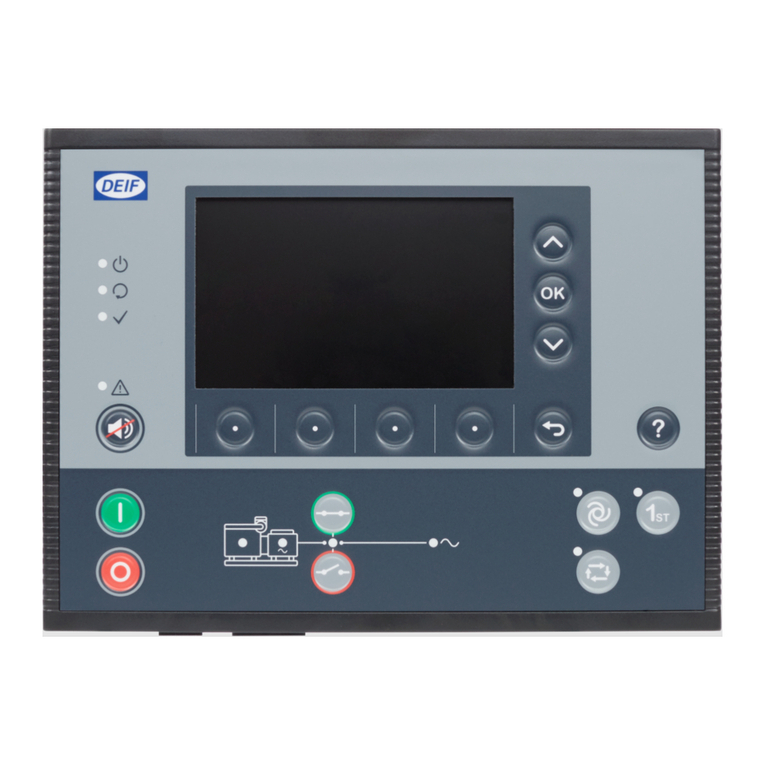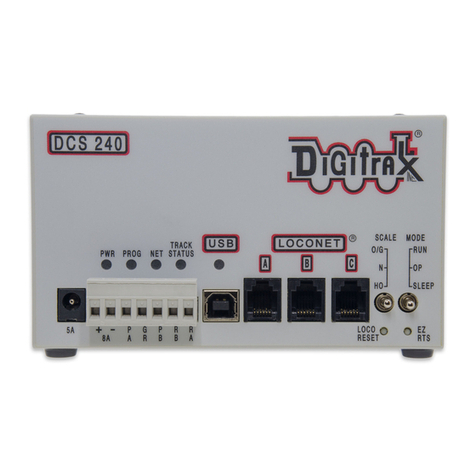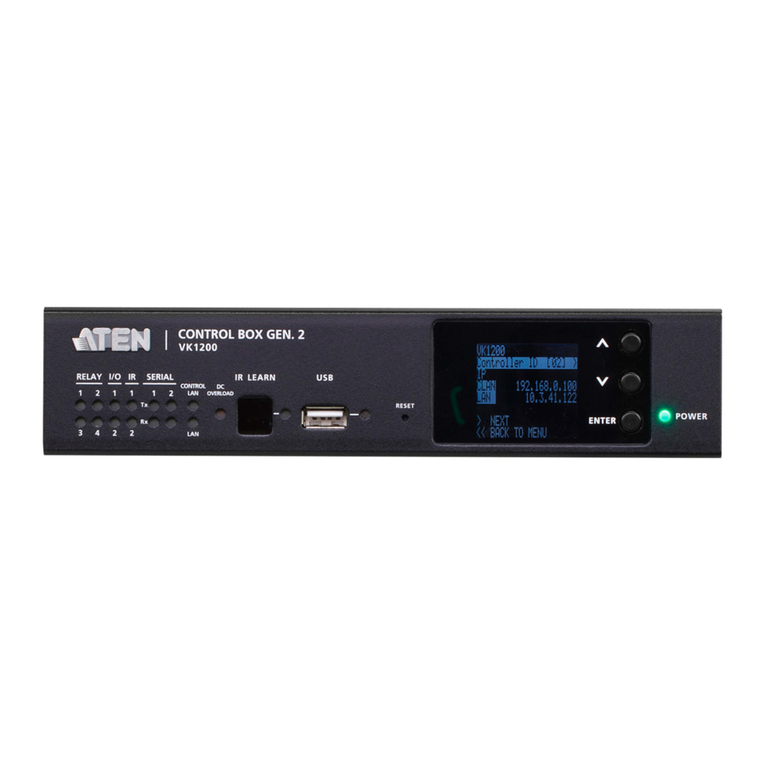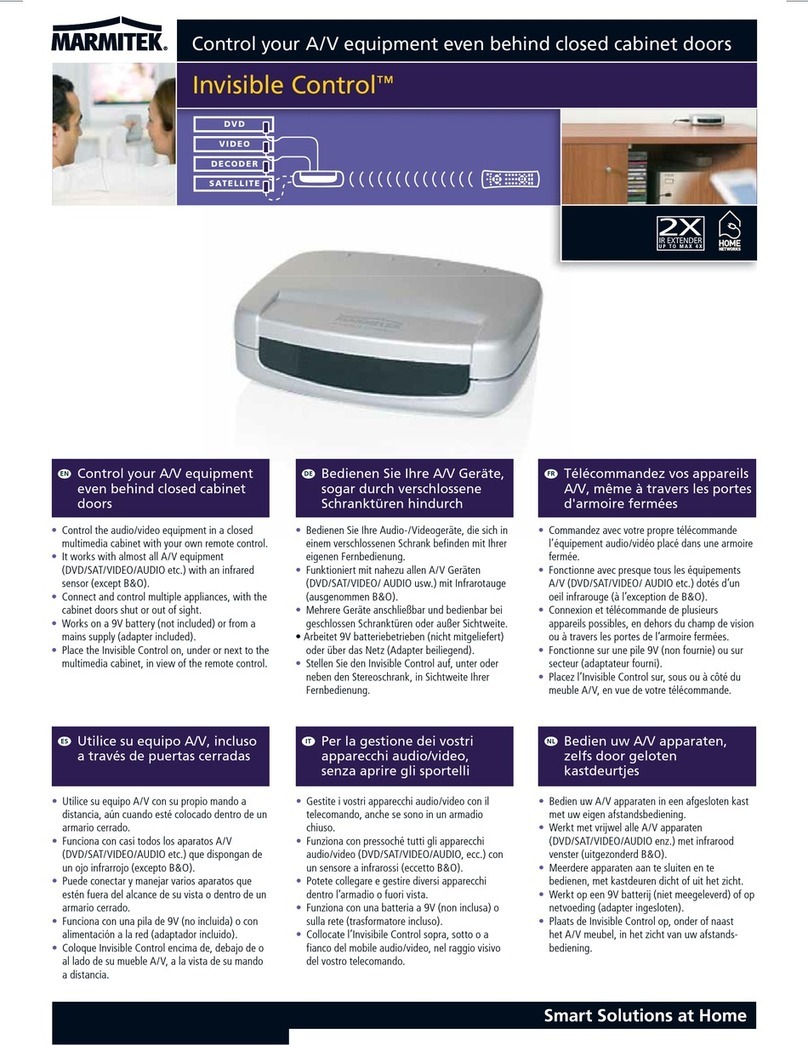General Dynamics 7200 User manual

CG-1280
REV N
AUGUST 2013
OPERATION AND MAINTENANCE MANUAL
FOR THE
7200 ANTENNA CONTROL SYSTEM
3750 W. Loop 281
Longview, Texas 75604
EXPORT CONTROL WARNING -
the disclosure of this
document or its contents to non-
U.S. persons, or the
transmission of its contents outside the United States must
be in compliance with U.S. Export Laws and Regulations.
The bearer of this document is under obligation to know the
applicable restrictions for the dissemination of its contents
that relate to U.S. Export Laws and Regulations or any other
U.S. government approvals.

Revision History
N- Revised table 5-35
L. Shirey
8/2/13
D. Harrison
8/2/13
13463
M – Revised Analog Input Conn
D. Cunningham
3/15/12
D. Harrison
3/15/12
11420
L – Revised for CE Certification
B. Tanner
11/15/11
S. Martinez
11/15/11
10897
K – Table 5-28 Corrections
B. Tanner
8/13/10
D. Harrison
8/13/10
10029
J – NORAD Tracking Appx. K
B. Tanner
5/11/09
W. Black
5/11/09
8676
H – V1000 Updates
B. Tanner
3-23-09
L. Bustamante
3-23-09
8559
G – Appendix J
A. Weaver
5-5-08
K. Kaufman
5-5-2008
7895
F – Encoders, misc
M. Neely
4-25-07
J. Upatham
4-25-007
6540
E – OE Tracking, params
M. Neely
1-12-05
D. Bulgrien
1-12-05
5567
D – parameters corrected
M. Neely
1-04-05
D. Bulgrien
1-04-05
5566
D – Set 0 and -3 dB, amnd
M. Neely
7-21-04
B. Harris
7-21-04
5353
D – Trblshtg. App. updated
M. Neely
6-7-04
D. Harrison
6-7-04
5272
D – ACU Sync added
M. Neely
4-23-04
M. Neibert
4-23-04
5127
C – Numerous updates
M. Neely
10-13-03
D. Harding
10-13-03
4769
B – V4 Software Rewrite
M. Neely
5-16-03
D. Harding
5-16-03
4621
A – First release
M. Neely
2-18-03
D. Harding
2-18-03
4554
Rev. No/change
Revised By
Date
Approved By
Date
ECO#

NOTICES
WARNING
THE ELECTRICAL CURRENTS AND VOLTAGES IN THIS EQUIPMENT ARE DANGEROUS. PERSONNEL
MUST OBSERVE SAFETY REGULATIONS AT ALL TIMES.
This manual is intended as a general guide for trained and qualified personnel who are aware of the
dangers of handling potentially hazardous electrical and electronic circuits. This manual is not intended
to contain a complete statement of all safety precautions that should be observed by personnel in
using this or other electronic equipment.
WARNING
IN CASE OF EMERGENCY BE SURE THAT POWER IS DISCONNECTED.
The manufacturer has attempted to detail in this manual all areas of possible danger to personnel in
connection with the use of this equipment. Personnel should use caution when installing, operating,
and servicing this equipment. Care should be taken to avoid electrical shock, whether the hazard is
caused by design or malfunction.
WARNING
ALWAYS DISCONNECT POWER BEFORE OPENING COVERS, ENCLOSURES, PANELS, OR SHIELDS.
ALWAYS USE GROUNDING STICKS AND SHORT OUT HIGH VOLTAGE POINTS BEFORE SERVICING.
NEVER MAKE INTERNAL ADJUSTMENTS OR PERFORM MAINTENANCE OR SERVICE WHEN ALONE
OR FATIGUED.
The manufacturer is specifically not liable for any damage or injury arising from improper procedures
or failure to follow the instructions contained in this manual or failure to exercise due care and caution
in the installation, operation, and service of this equipment or use by improperly trained or
inexperienced personnel performing such tasks. During installation and operation of this equipment,
local building codes and fire protection standards must be observed.
PROPRIETARY NOTICE
All computer software, technical data, or other information pertaining to the equipment covered by this
manual is proprietary to General Dynamics. Such information is transmitted in this manual or related
documents for the benefit of General Dynamics customers and is not to be disclosed to other parties
verbally or in writing without prior written approval of General Dynamics. Additionally, this manual
may not be reproduced in whole or in part without written consent from General Dynamics.
© 2011 General Dynamics SATCOM Technologies

Declaration of Conformity
The General Dynamics 7200 ACU Rack Mount Unit (201379)
was tested to the following specifications and found to be in compliance
with the required criteria on the indicated test date.
In accordance with the following directives:
72/23/EEC
The Low Voltage Directive
and its amending directives.
89/336/EEC
The Electromagnetic Compatibility Directive
and its amending directives.
It has been designed and manufactured to the following specifications:
EN 61010-1: 2001
EN 300339: 1998
EN 55022: 1998
Class B
EN 61000-4-2: 1995
(4/8kV)
EN 61000-4-3: 1995
(3V/m)
EN 61000-4-4: 1995
(2kV/1kV)
EN 61000-4-5: 1995
(2/1kV)
EN 61000-4-6: 1996
(3 Vrms)
EN 61000-4-11: 1994
>95%-0.5p, 30%-25p,>95%-250p
I hereby declare that the equipment named above, when installed according to manufacturer’s
instructions, complies with the above directives and standards.
Signed:
Date:
February 18, 2003
General Dynamics SATCOM Technologies
3750 W. Loop 281
Longview, TX 75604
Telephone: (903) 295-1480 Fax: (903) 295-1479

Table of Contents
TABLE OF CONTENTS
1.0 INTRODUCTION.......................................................................................1
1.1 Purpose..........................................................................................1
1.2 Scope ............................................................................................1
1.3 Organization of Included Contents.....................................................1
1.4 Supplemental Literature on CD and Website .......................................2
1.4 Technical Support ...........................................................................3
1.5 Important Safety Information ............................................................3
1.5.1 Explanation of Safety Symbols ................................................................ 3
1.5.2 Technical & Environmental Specifications ................................................. 3
1.5.3 User Supplied Power Cord Requirements................................................... 3
1.5.4 Note about connecting/disconnect from mains power. ................................ 4
2.0 OVERVIEW OF THE 7200 ACS ................................................................1
2.1 General Information About the 7200 ACS ..........................................1
2.2 System Specifications......................................................................2
2.3 System Configuration ......................................................................3
FIGURE 2-1 TYPICAL 7200 ACS BLOCK DIAGRAM...................... 3
2.4 System Hardware............................................................................5
2.4.1 7200 ACU Hardware ............................................................................. 6
FIGURE 2-2 7200 ANTENNA CONTROL UNIT FRONT PANEL ........6
FIGURE 2-3 7200 ACU FUNCTIONAL BLOCK DIAGRAM............... 7
FIGURE 2-4 7200 ANTENNA CONTROL UNIT TOP VIEW ..............8
FIGURE 2-5 7200 ANTENNA CONTROL UNIT SIDE VIEW .............8
FIGURE 2-6 VCPU CARD ...........................................................9
2.4.2 Antenna Drive Cabinet Hardware ........................................................... 16
FIGURE 2-7 DRIVE CABINET BLOCK DIAGRAM ......................... 17
FIGURE 2-8 DRIVE CABINET ASSEMBLY................................... 18
2.5 Controls and Indicators .................................................................. 21
2.5.1 7200 ACU Controls and Indicators......................................................... 21
FIGURE 2-9 7200 ANTENNA CONTROL UNIT DISPLAY .............. 22
2.5.2 Drive Cabinet Controls and Indicators..................................................... 25
2.6 System Functions.......................................................................... 26
2.7 Standby ....................................................................................... 26
2.8 Manual Control Via Portable Maintenance Control Unit (PMCU) .......... 27
FIGURE 2-10 PORTABLE MAINTENANCE CONTROL UNITS .......... 27
2.8.1 Manual Antenna Control from the Drive Cabinet ...................................... 28
2.8.2 Manual Antenna Control from the Antenna Control Unit............................ 28
2.9 Immediate Tracking .......................................................................28
i

Table of Contents
2.9.1 Move to Longitude............................................................................... 28
2.9.2 Move to Look Angles ........................................................................... 28
2.9.3 Steptrack ........................................................................................... 29
2.9.4 Star Tracking ...................................................................................... 29
2.9.5 Intelsat 11-element Track ..................................................................... 29
2.9.6 Orbital Element Track (Optional) ............................................................ 30
2.10 Tracking Functions .......................................................................31
2.10.1 Orbit Prediction Tracking ...................................................................... 31
3.0 THEORY ................................................................................................1
3.1 OPT...............................................................................................1
3.1.1 Orbit Prediction ..................................................................................... 1
3.1.2 Orbit Determination ............................................................................... 2
3.2 Orbit Scan......................................................................................3
3.2.1 Orbit Scan Theory ................................................................................. 3
FIGURE 3-1 ORBIT SCAN THEORY ............................................. 4
3.2.2 Orbit Scan Operation.............................................................................. 4
4.0 INSTALLATION AND INITIAL SETUP OF SYSTEM ......................................1
4.1 Overview .......................................................................................1
4.2 Mechanical Installation.....................................................................1
4.2.1 Antenna-Mounted Components ............................................................... 1
4.2.2 Installing the Drive Cabinet ..................................................................... 1
4.2.3 Installing the 7200 ACU ......................................................................... 2
FIGURE 4-1 MOUNTING THE 7200 ACU .....................................2
4.3 System Cabling...............................................................................4
FIGURE 4-2 7200 ANTENNA CONTROL SYSTEM CABLING
DIAGRAM 4
4.3.1 Drive Cabinet Main Power Connection...................................................... 5
FIGURE 4-3 DRIVE CABINET ASSEMBLY.....................................5
4.3.2 Connecting the Drive Motors to the Drive Cabinet...................................... 6
4.3.3Limit Switch Connections ....................................................................... 7
4.3.4 Installing the 7200 ACU Control Cable ..................................................... 8
FIGURE 4-4 7200 ANTENNA CONTROL UNIT REAR PANEL ..........8
4.3.5 Resolver and Encoder Connections......................................................... 11
4.3.6 Analog Input Connections..................................................................... 16
4.3.7 Digital Inputs ...................................................................................... 17
4.3.8 Remote Communications Connections .................................................... 18
4.3.9 Remote Beacon Select and Summary Fault Connections ........................... 20
4.4 Initial Power-Up and System Setup..................................................21
4.4.1 Drive Cabinet Power-Up and Initialization ................................................ 22
FIGURE 4-5 GPD315 DIGITAL OPERATOR INDICATOR AND KEY
DESCRIPTION 23
FIGURE 4-6 DIGITAL OPERATOR INDICATOR AND KEY
DESCRIPTION 24
FIGURE 4-7 V1000 KEYS, DISPLAYS, AND LEDS ...................... 25
ii

Table of Contents
FIGURE 4-8 V1000 DIGITAL LED OPERATOR SCREEN STRUCTURE
26
FIGURE 4-9 V1000 DRIVE PARAMETER SETTINGS OR VALUES.. 27
4.4.2 ACU Power-Up and Initialization ............................................................ 32
5.0 OPERATION...........................................................................................1
5.1 Introduction ....................................................................................1
5.2 The 7200 ACS Menu System ...........................................................1
FIGURE 5-1 7200 ACS BASIC MENU SYSTEM ............................2
5.2.1 Multiscreen Menus ................................................................................ 2
FIGURE 5-2 MULTISCREEN MENU..............................................2
5.2.2 Menu Items .......................................................................................... 3
FIGURE 5-3 TRACKING FUNCTIONS MENU SYSTEM ................... 3
5.3 The Help System.............................................................................3
FIGURE 5-4 ACS HELP SCREEN (PARAMETER HELP SCREEN).......4
FIGURE 5-5 7200 ACS HELP SCREEN (INTRODUCTORY HELP) .....4
5.4 System Prompts..............................................................................5
FIGURE 5-6 PARAMETER EDIT SCREEN ......................................5
5.4.1 Error Messages for Incorrect Entries ......................................................... 5
5.4.2 Confirmation Messages .......................................................................... 6
5.5 Parameter and Data Storage .............................................................6
5.6 Power-Up Procedures ......................................................................6
5.7 Manual Movement of the Antenna ....................................................7
5.7.1 Manual Movement From the Drive Cabinet (PMCU) .................................... 7
5.7.2 Manual Movement From the ACU ............................................................ 8
5.8 The 7200 ACS Main Menu...............................................................8
FIGURE 5-7 7200 ACU MAIN MENU SCREEN ..............................8
5.8.1 Return to Standby (Stop Tracking) Function .............................................. 9
5.8.2 Tracking Functions Menu........................................................................ 9
FIGURE 5-8 TRACK A TARGET SCREEN ................................... 10
FIGURE 5-9 MANUALLY BIAS TARGET SCREEN ........................ 11
FIGURE 5-10 MANUAL ANTENNA CONTROL SCREEN.................. 18
5.8.3 Clear/Correct System Faults Function..................................................... 34
5.8.4 Set User Level (and Passwords) Menu .................................................... 36
5.8.5 Display System Status Menu................................................................. 37
FIGURE 5-11 RDC STATES DISPLAY .......................................... 39
5.8.6 Edit System Configuration Menu............................................................ 52
FIGURE 5-12 SOFT LIMITS ........................................................ 58
6.0 MAINTENANCE ......................................................................................1
iii

Table of Contents
6.1 Air Filter.........................................................................................1
FIGURE 6-1 7200 ACU REAR PANEL FAN...................................1
6.2 Battery...........................................................................................2
6.2.1 Checking the Battery.............................................................................. 2
6.2.2 Replacing the Battery ............................................................................. 2
6.3 Power Entry Module Fuse.................................................................2
7.0 ENGINEERING DRAWINGS ..................................................................... 1
APPENDIX A Acronyms and Abbreviations..................................................... A-1
APPENDIX B 7200 ACU Password Protection ............................................... B-1
APPENDIX C Two Speed Resolver Calibration ................................................ C-1
APPENDIX D Tracking Tutorial for Operators.................................................. D-1
APPENDIX E 7200 Troubleshooting Guide..................................................... E-1
APPENDIX F Site Acceptance Test Procedure.................................................F-1
APPENDIX G Graphical Menu Tree ................................................................ G-1
APPENDIX H Vendor Data............................................................................ H-1
APPENDIX J Field Procedure to Install CTB055...............................................J-1
APPENDIX KNORAD Tracking ..................................................................... K-1
APPENDIX L Addendum Notes for CP/LP-PATH Option....................................L-1
iv

Introduction
1.0 INTRODUCTION
1.1 Purpose
This manual provides the user with the information necessary to install and operate
the General Dynamics SATCOM Technologies (GDST) Model 7200 Antenna
Control System (ACS). Failure to follow the instructions and all cautions and
warnings provided in this manual may result in improper installation and/or
operation of the 7200 ACS.
1.2 Scope
This manual primarily contains the information related to the 7200 ACS, and
includes limited information about the antenna structure, the equipment used to
develop the tracking signal, and other equipment peripheral to the 7200 ACS.
1.3 Organization of Included Contents
This manual is divided into the following sections:
•Section 1.0, Introduction, gives the purpose, scope, and organization of this manual.
Information for obtaining technical support is also included in this section.
•Section 2.0, Overview of the 7200 ACS, provides a general overview of the system, including
specifications, the functions of the system, and a description of the controls and indicators.
•Section 3.0, Theory of Operation, explains the theory of operation of the 7200 ACS.
•Section 4.0, Installation, provides instructions for installing the 7200 ACS, showing the
connections of system cabling and explaining the setup and initial power-up of the system.
•Section 5.0, Operation, provides detailed information for configuring and operating the 7200
ACS.
•Section 6.0, Maintenance, provides information necessary for maintaining the 7200.
•Section 7.0, Engineering Drawings, contains the engineering drawings for the 7200 ACU and
the drive cabinet.
•Appendix A, Acronyms and Abbreviations, lists the definitions of all acronyms and
abbreviations used in this manual.
•Appendix B, 7200 ACU Password Protection, provides information to set, change, and clear
user passwords from the 7200 ACS. It also provides information to disable password
protection on the system.
•Appendix C, Two-Speed Resolver Calibration, provides instructions for calibrating the two-
speed resolvers in the 7200 ACS.
1-1

Introduction
•Appendix D, Tracking Tutorial for Operators, provides instructions for quickly setting up
tracking with the 7200 ACS, eliminating the need to read the step-by-step instructions in
Section 5.0 of the manual.
•Appendix E, 7200 Troubleshooting Guide, contains probable causes and corrective action for
troubleshooting the 7200 ACS.
•Appendix F, Site Acceptance Test Procedure, contains the final proof of acceptance procedure
for the antenna control system.
•Appendix G, Graphical Menu Tree, contains a graphical menu tree that depicts all menus and
parameters for the system.
1.4 Supplemental Literature on CD and Website
Related documentation that is highly specialized or infrequently used has been
included on an enclosed Compact Disc. This information is also maintained on the
General Dynamics SATCOM Technologies website at http://www.gdsatcom.com.
This manual and all its various appendices have also been included on the CD. In
addition, documentation for prior generation (legacy) systems is included.
TABLE 1-1 SUPPLEMENTAL DOCUMENTATION
Directory Contents
7200 O&M Manual CG-1280 – All subdocuments
(Including vendor literature)
Protocol Documents
CG-6042 – RC M&C protocol document
CG-6045 – MT M&C protocol document
CG-6041 – GPIB protocol document
Firmware Upgrade Procedures
CG-1281 – VCPU Flash Firmware Upgrade
Procedure V4.x
CG-1295 – 72XX ACU Parameter Download/
Upload V4.3+
Factory Test Procedures Reports
CG-0281 – Factory Test Proc. – 7200 (VCPU)
CG-0282 – Factory Test Report – 7200 (VCPU)
CG-0283 – Factory Test Proc. – VCPU
CG-0284 – Factory Test Report – VCPU
7200 Legacy Product Documents
CG-1190 – 7200 w/7150 (NTAC 2000 Inverters)
CG-1210 – 7200 w/7134 (NTAC 2000 Inverters)
CG-1260 – 7200 w/7150 (GPD315 Inverters)
(non-VCPU 7200)
CG-5546 – Force CPU 30xxxx Firmware Upgrade
Procedure V3.x
1-2

Introduction
1.4 Technical Support
The 7200 Antenna Control Unit (ACU) contains context-sensitive, on-line help that
is easily accessible from any menu or submenu in the system by simply pressing
the [HELP] key on the 7200 ACU's front panel. For operational problems, a
troubleshooting guide is provided in Appendix E of this manual.
If any questions or problems arise that are not addressed by the manual or the
online help (provided by pressing the [HELP] key), please contact our technical
support team.
1. Email us at LV_CustomerService@gdsatcom.com.
2. Phone us at (903) 295-1480.
1.5 Important Safety Information
1.5.1 Explanation of Safety Symbols
Symbol Explanation
Protective Earth/Ground Terminal
Caution, Risk of Electric Shock
Caution, Risk of Danger.
Consult accompanying documents.
1.5.2 Technical & Environmental Specifications
ACU Dimensions
7 in H (17.8 cm) x 19 in W (48.3 cm) x 19 in D (48.3 cm)
ACU Mass 26 lbs (11.8 kg)
ACU Maximum Power 75 VA
ACU Maximum Operating Altitude 10,000 ft (3,048 m)
1.5.3 User Supplied Power Cord Requirements
If the factory supplied power cable for the ACU is not available, a user supplied
power cord may be used provided it meets the following criteria: #18 AWG, 10A.
The Belden 17742C/10 or equivalent power cord for example is recommended.
1-3

Introduction
1.5.4 Note about connecting/disconnect from mains power.
The main power source supplying power to the rack that the 7200 Antenna
Control Unit is installed in should be easily accessible for disconnect should an
equipment fault occur.
1-4

Introduction
THIS PAGE INTENTIONALLY LEFT BLANK
1-5


Overview
2.0 OVERVIEW OF THE 7200 ACS
2.1 General Information About the 7200 ACS
The 7200 ACS is an antenna pointing system, controlled manually or
automatically, that positions the antenna to receive the peak signal from one or
more communications satellites. The 7200 ACS uses microprocessor technology to
provide accurate antenna positioning, high reliability, and maximum system
flexibility. The system has the capabilities for rapid multiple satellite access, highly
sophisticated predictive tracking with inclined orbit satellites, and EIA/TIA-232E,
EIA/TIA-422B, IEEE-488 (Optional) remote control communications, and 10BASE-T
Ethernet.
In two-axis applications, azimuth (AZ) and elevation (EL) controls are used to
position the antenna. The three-axis applications use AZ, EL, and polarization (POL)
controls to position the antenna and feed assembly. The four-axis applications use
AZ, EL, and two polarizations (POL & 4TH AXIS) to control the position of the
antenna and feed assembly. Variable speed inverters provide two-speed operation
for AZ and EL with continuously variable drive rates over a range of approximately
50 to 1. The 7150 Drive Cabinet houses the drive controls and interfacing
equipment to the 7200 ACS. The 7150 Drive Cabinet is normally mounted on the
antenna foundation.
A large 8-inch by 4-inch electro-luminescent display and a sensible, uncluttered
keypad form a user interface which is fully menu-driven and includes context-
sensitive help messages. With much detail paid to the man-machine interface, the
7200 ACU provides straightforward access to an extremely versatile ACS.
The 7200 offers a number of operational modes including manual jog control,
several programmed positioning modes, "conventional" steptrack, and the
revolutionary Orbit Prediction Track (OPT) mode. OPT provides tracking
performance approaching that of monopulse control systems by combining efficient
steptrack operation with advanced orbital propagation algorithms to produce a
state-of-the-art, predictive tracking method. With OPT, the 7200 provides highly
accurate tracking with minimal initial data (approximately 1.25 hours for initial
model development).
Two-speed motor control is provided as standard equipment, not through the use
of expensive clutched arrangements or dual-wound drive motors, but with standard
three-phase induction motors, controlled by solid-state variable frequency inverters.
This approach not only provides a reliable and cost-effective means of two-speed
operation (with ratios of up to 50 to 1), but also allows for more precise
positioning than conventional Alternating Current (AC) motor control systems
which simply use contactors to switch motor power on and off. This is a result of
the ability of the inverter to "ramp" the motor speed up or down in a controlled
manner rather than simply removing motor power while at full speed. This can
result in uncontrollable coasting and inevitable "overshoot" of the target.
2-1

Overview
An optional cable allows the user to remotely control the antenna axes, using the
Portable Maintenance Control Unit (PMCU) located in the 7150 drive cabinet.
2.2 System Specifications
As shown in Table 2-1, the 7200 ACS has specifications that reflect performance
sufficient for virtually any communications system antenna, as well as Tracking,
Telemetry, and Control (TT&C) applications. Tracking accuracy within 5 percent of
the receive antenna beamwidth are achievable due to the advantages provided in
the sophisticated OPT modeling. The overall tracking accuracy is related to the
resolution of the angular position display system, which is configured according to
individual system requirements.
TABLE 2-1 7200 ACS SPECIFICATIONS
FEATURE
DESCRIPTION
Tracking Accuracy
Nominally more than 10% of receive 3 dB beamwid
th, RMS, in Steptrack mode.
Nominally 5% of receive 3 dB beamwidth, RMS, with valid model in OPT mode
(independent of orbit inclination).
Position Encoding
1) (Standard) Absolute, single-speed, brushless resolvers (size 11) and 16-bit monolithic
LSI tracking resolver-to-digital conversion IC's with 0.02° RMS accuracy.
2) (Optional) Absolute, electrical two-
speed, brushless resolvers (size 20) and paired LSI
tracking resolver-to-digital conversion IC's with 0.01° peak accuracy.
3) (Optional) Absolute optical encoders w/accuracies to ±0.004° over 360° range.
Front Panel Position
Display Resolution
0.01° Standard – Single speed resolvers
0.001° (Optional - Available only with two-speed resolvers or optical encoders.)
Position Encoding
Repeatability
Typically 1 LSB of resolver-to-digital conversion resolution
Input Power
Requirements
Drive cabinet
(two factory configurations available):
1) 208-240 VAC, three-phase, 50-60 Hz, 5-wire WYE.
2) 380-415 VAC, three-phase, 50-60 Hz, 5-wire WYE.
Drive Cabinet current requirements are determined by the motor horsepower.
Antenna Control Unit (Rack Mount): 100-240 VAC, 50-60 Hz; 75 VA (Nominal)
Horsepower Range
1/2 to 20 HP; Others available per special order
ACU Tracking
Receiver Interface
GDST Model DTR - Serial Port (Standard) EIA/TIA-232E or EIA/TIA-422B.
GDST Model 253 - Analog: Single 0 to 10 VDC analog input;
Contact closure outputs available for selection of up to four beacon signals for legacy
fixed frequency receivers.
Remote
Communications
Interface
10BASE-T Ethernet Port (IEEE 802.3) for remote monitor and control.
Or EIA/TIA-232E 115.2 kbps max. or EIA/TIA-422B (115.2 kbps max.)
(Optional) IEEE-488 GPIB (General Purpose Interface Bus).
Summary Alarm
Output
Normally closed dry contacts, ratings:
Maximum Voltage 220 VDC or 125 VAC.
Maximum Switched Current 1 Amp
Maximum Switched Power 62.5 VA
System
Interconnect
Cabling
*ACU/drive cabinet interface (1) 25/C, #22 AWG
*Resolver/ACU (2) three-shielded pair, #22 AWG (two-axis systems)
*(3) three-shielded pair, #22 AWG (three-axis systems)
*100 feet of interconnect cabling
*Additional cabling is available up to a maximum length of 1500 feet
*Two-speed and optical encoding systems cabling requirements specified for each
requirement
2-2

Overview
TABLE 2-1 7200 ACS SPECIFICATIONS
FEATURE
DESCRIPTION
Environmental
Antenna Control Rack-mounted Unit:
Temperature - 0°C to + 50°C; Humidity - 90% non-condensing
Drive Cabinet:
Temperature (Standard) -10°C to +50°C
Temperature (Optional) -40°C to +50°C (Low temperature package)
Humidity - 100% condensing.
Specifications subject to change without notice.
2.3 System Configuration
Refer to Figure 2-1 for a typical overall block diagram of the integrated control
system. Items shown with solid interconnection lines represent fundamental
system components that provide automatic positioning for a two-axis system.
Items connected with a dashed line represent typical system options such as a
tracking receiver, POL motorization components, Customer-Furnished Equipment
(CFE), and remote Monitor and Control (M&C) equipment.
Figure 2-1 Typical 7200 ACS Block Diagram
2-3

Overview
The standard main input voltage for the drive cabinet is either 208 VAC three-
phase WYE, or 380 - 415 VAC three-phase WYE requiring a four-wire circuit plus a
ground conductor. The actual current/power requirements for a given system are
essentially established by the drive motor characteristics with only a small portion
being used for control logic power. Other input voltages and frequencies are
available as options, as is single-phase input power (the drive motors remain three-
phase in this case as the inverter modules perform the required conversion). The
input power wiring connects to pressure-type lug terminals on the main circuit
breaker housing inside the drive cabinet.
NOTE: In all cases, power wiring to the drive cabinet
must be sized for the rated currents and voltage drop and installed
by qualified personnel in accordance with local codes.
Power for each of the drive motors is supplied from the drive cabinet through
double insulated cables which are run through conduit and other enclosures serving
as cable plenums and pull boxes. The motor power conductors connect to
pressure-type lugs on terminals in the drive cabinet and in the motor junction
boxes. Motor power wiring is sized for rated currents and voltage drops and is
protected by overcurrent devices as defined by the regulations of the National
Electrical Code (NEC), International Electrotechnical Commission (IEC), and
Institute of Electrical and Electronic Engineers (IEEE).
Overtravel limit switches for each axis are interfaced with the drive cabinet via
double insulated control cabling. In the drive cabinet, drive interlock logic is
provided for each direction of travel and a summary limit alarm is developed and
provided to the ACU for display. The limit switch cables connect to pressure-type
terminals at each limit switch and in the drive cabinet.
Axis drive commands and drive cabinet status signals are passed between the ACU
and drive cabinet through a 25 conductor, #22 AWG cable with a maximum length
of 1500 feet. The cable connects to a pressure-type terminal strip in the drive
cabinet and terminates into a 25-pin female D-connector at the rear of the ACU.
The AZ, EL, and POL (three-axis systems) and AZ, EL, POL and 4TH AXIS (four-
axis systems) transducers interface directly with the ACU via a shielded
multiconductor cable for each device. The standard configuration includes single-
speed, brushless resolvers that require three twisted pair cables. The cables
terminate to flying leads at the resolver via solder or positive crimp connections
and terminate into male D-connectors at the ACU end (25-pin for AZ and EL; 9-pin
for POL). Other types of position transducers, including high accuracy two-speed
resolvers and absolute optical encoders, are available as options to accommodate
critical antenna pointing accuracy requirements or to provide additional resolution
for narrow beamwidths.
2-4

Overview
In applications requiring closed-signal-loop tracking (Steptrack and OPT), a serial
connection between the General Dynamics DTR tracking receiver and the 7200
ACU provides the ACU with the beacon signal level. Alternatively, an analog
tracking signal is accepted through the ACU rear panel via J21 (a 9-pin D-
connector). The nominal tracking voltage input is in the range of 0 to 10 VDC,
with a slope of 0.2 V/decibels (dB) to 1.0 V/dB. Beacon select outputs are
provided on a 7200 ACU rear panel terminal strip (TB1), allowing remote manual or
automatic beacon selection with General Dynamics tracking receivers.
Full function remote control of the tracking system is facilitated through the
10BASE-T Ethernet port or one of the serial ports (both EIA/TIA-232E and EIA/TIA-
422B are provided). An IEEE-488 (also known as GPIB), interface is also available
as a factory option.
A summary alarm contact is provided on the ACU rear panel user interface terminal
strip TB1. The contact can be wired to a warning light, buzzer or M&C interface to
alert the station operators that the 7200 ACU has a summary fault condition.
2.4 System Hardware
The 7200 ACS consists of the following subsystems:
•Model 7200 ACU
•7150 Drive cabinet
•Position Feedback Devices
The system interfaces with three-phase induction motors for AZ and EL positioning
and a single-phase AC synchronous stepping motors for POL rotation. Limit
interfaces are for normally closed switches that open upon engagement.
2-5

Overview
2.4.1 7200 ACU Hardware
The Model 7200 ACU is a technically advanced, specially designed, multitasking
embedded control computer that includes input and output circuitry sufficient for
interfacing with all other related tracking system components. The ACU hardware
is based upon the industrial Versa Module Europe (VME64 (VITA 1-1994)) bus
architecture, providing extreme versatility and reliability far above many other
hardware platforms. Several printed circuit cards and peripheral subassemblies,
described in subsequent sections, are integrated in a custom chassis to comprise
the ACU. The primary components of the 7200 ACU are:
•
Front Panel Display Assembly
•
Rear Panel PCB
•
Keyboard Controller PCB
•
One Power Supply
•
Digital I/O Daughter PCB
•
VCPU PCB
•
Optical Encoder PCB (Optional)
•
Single/Dual-Speed RDC PCB (Optional)
•
Optical Encoder I/O PCB (Optional)
The 7200 ACU front panel is shown in Figure 2-2. The 7200 ACU functional block
diagram is shown in Figure 2-3. Figures 2-4 and 2-5 show the top and side view
of the ACU respectively. (Refer to the engineering drawings in Section 7.0)
Figure 2-2 7200 Antenna Control Unit Front Panel
2-6
Table of contents
Popular Control System manuals by other brands
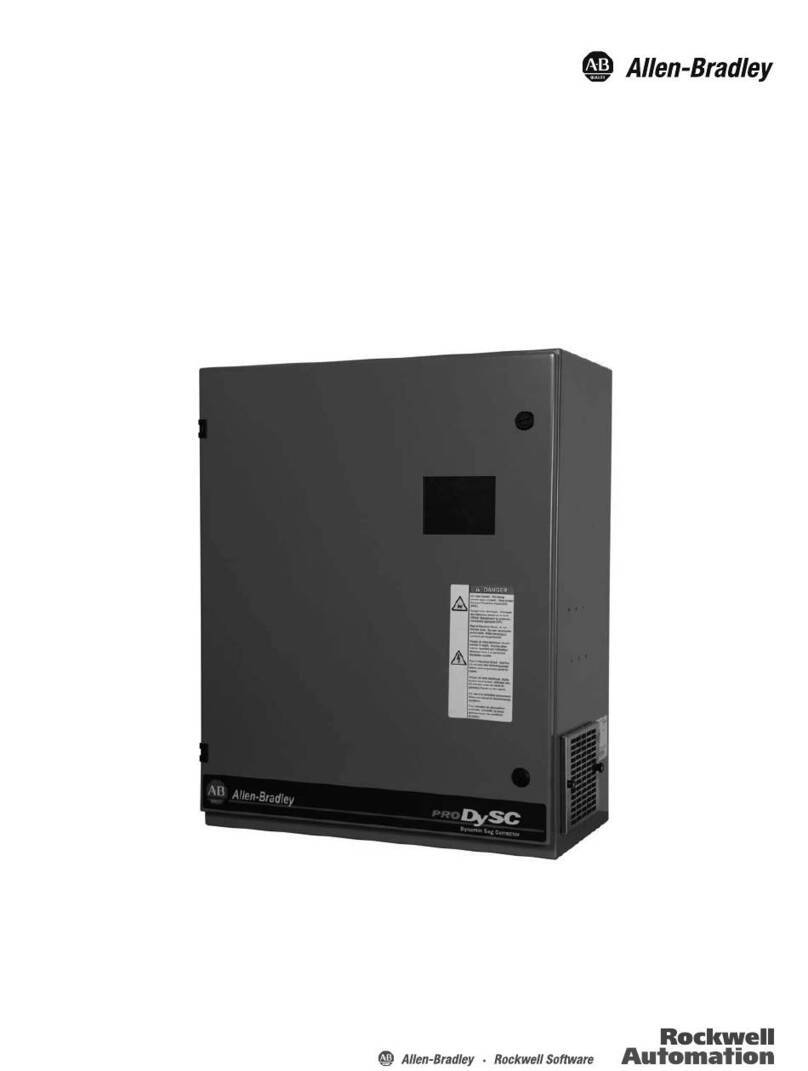
Rockwell Automation
Rockwell Automation AB Quality Allen-Bradley 1608P installation instructions

ATMOX
ATMOX MAXX user guide

Willoughby
Willoughby AquaFount WAF-3606-PSL-FT Series Installation & operation manual

Cleveland
Cleveland HA-SE-CC Specifications
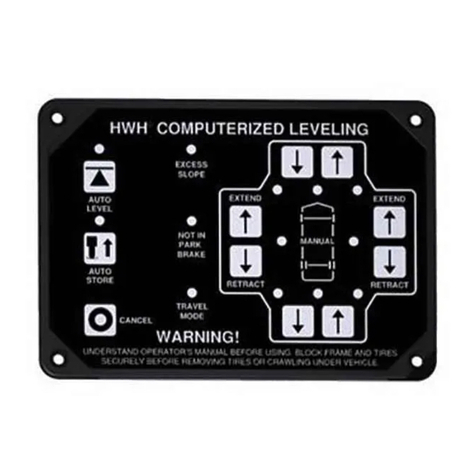
HWH Corporation
HWH Corporation 625S Series Operator's manual
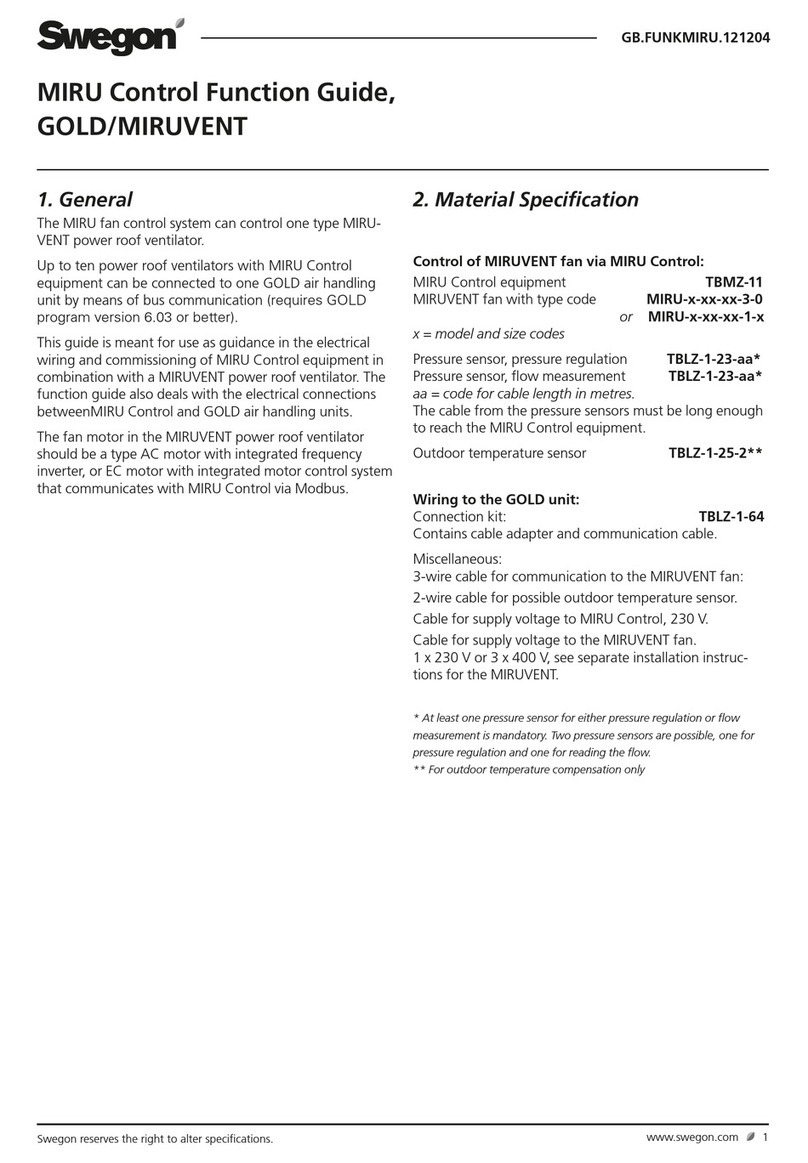
Swegon
Swegon MIRU Control Function guide
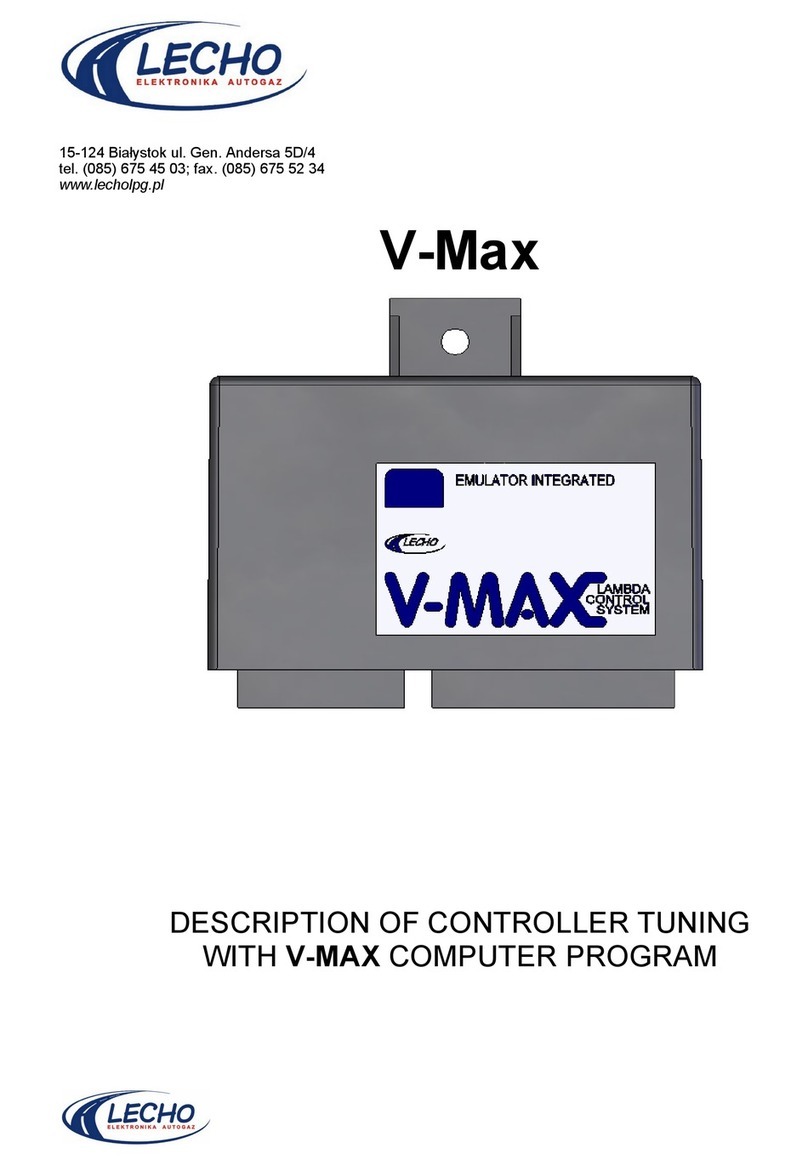
LECHO
LECHO V-Max manual
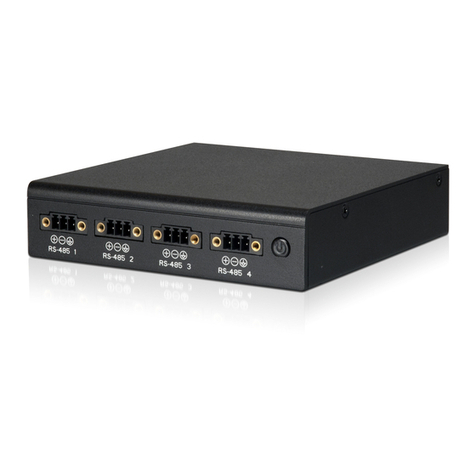
VIA Technologies
VIA Technologies ARTiGO-A600 Evaluation guide
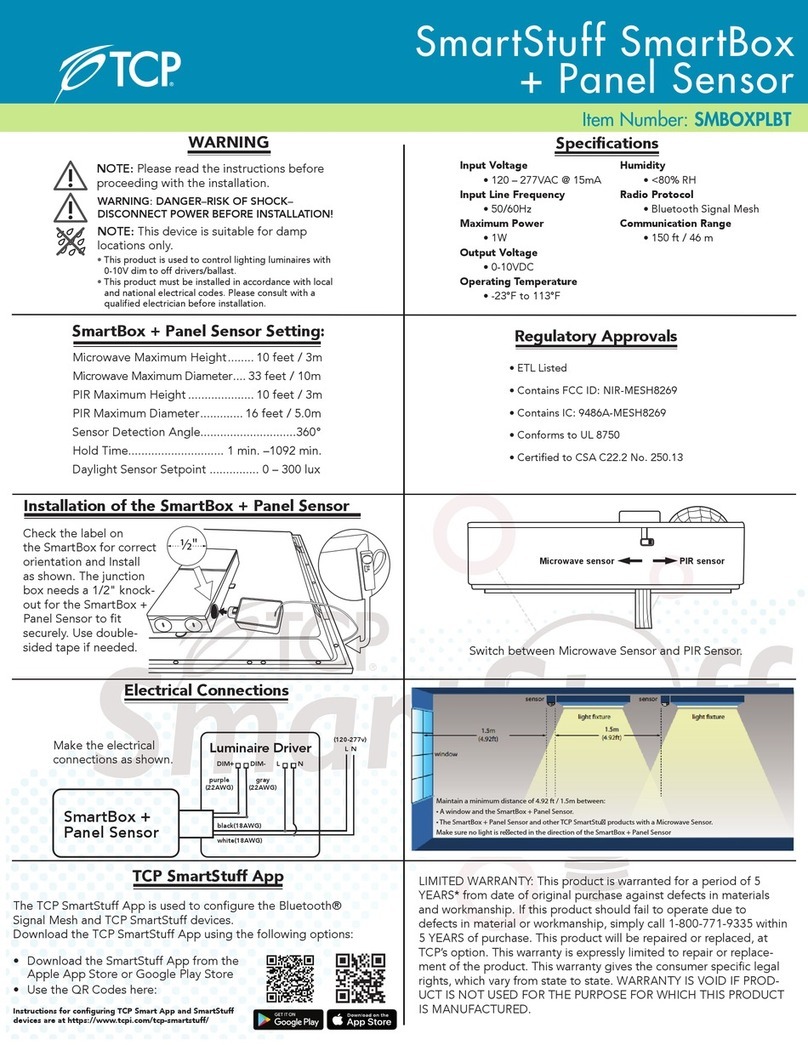
TCP
TCP SmartStuff SmartBox quick start guide

Jackson Systems
Jackson Systems Z-600 Installation and operation manual
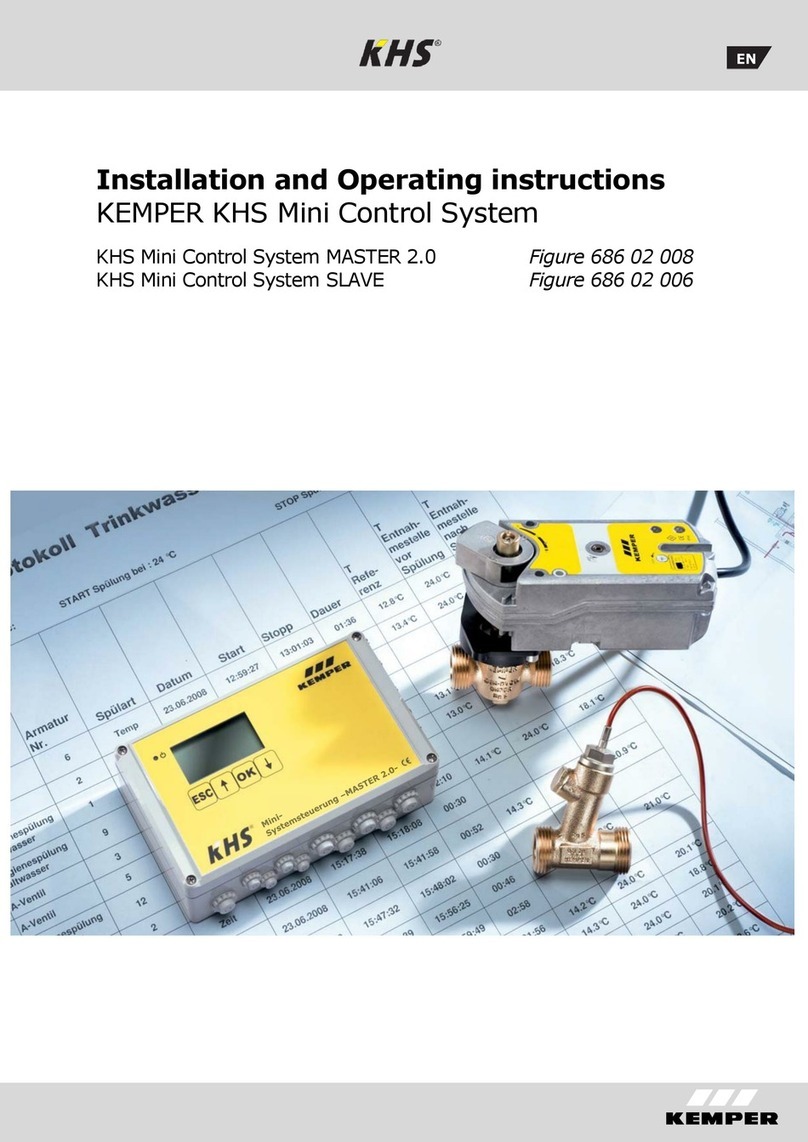
Kemper
Kemper KHS Mini Control System MASTER 2.0 Installation and operating instructions
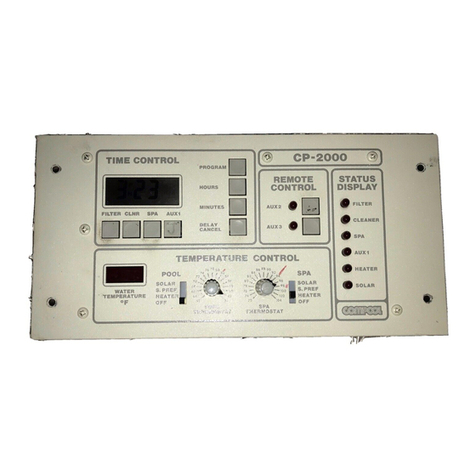
Compool
Compool Pool-Spa Control System CP-2000 owner's manual

